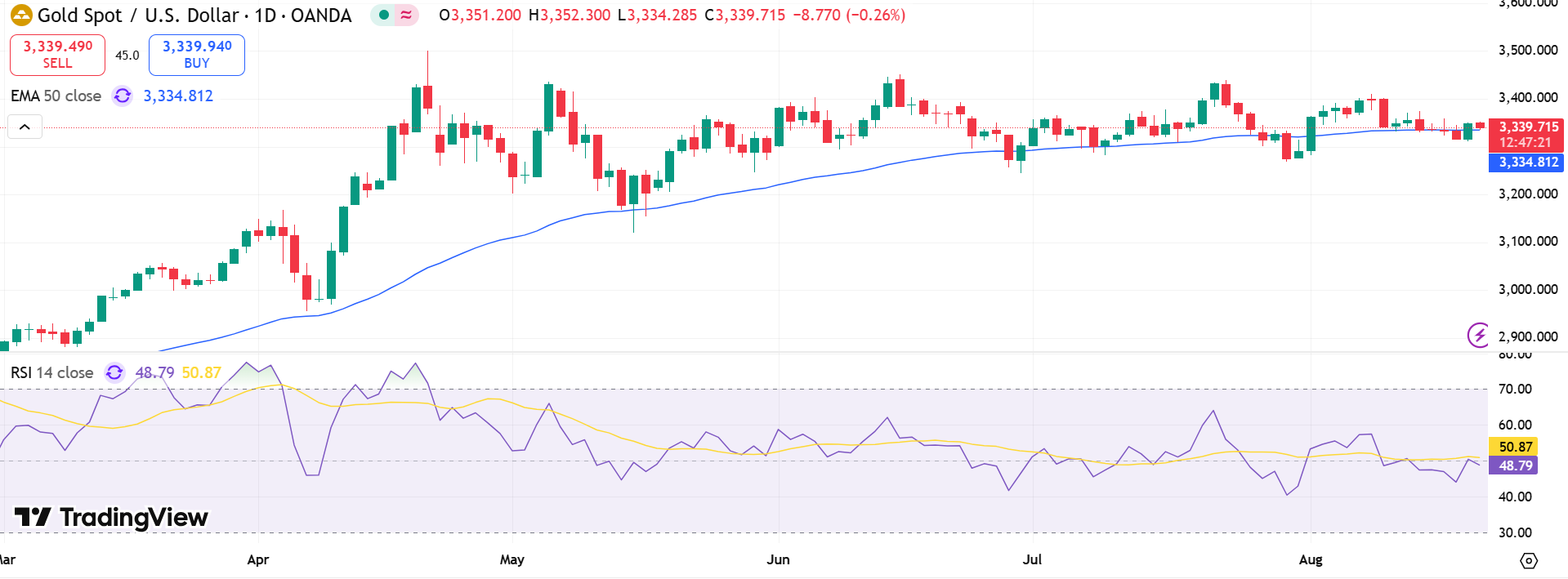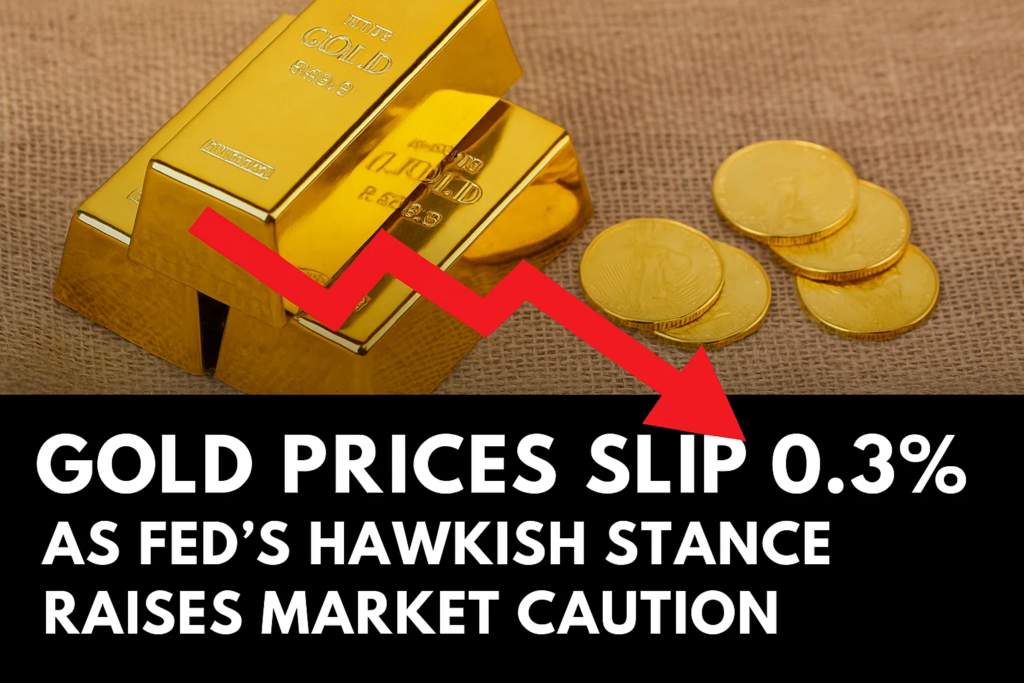Gold prices edged lower in Asian trade Thursday, weighed down by renewed uncertainty over U.S. monetary policy. Spot gold slipped 0.3% to $3,339.31 per ounce, while October futures dipped 0.2% to $3,381.62 per ounce.
The decline followed the release of minutes from the Federal Reserve’s July meeting, which signaled policymakers remain cautious about cutting rates. While two members voted for an immediate reduction, most officials favored holding steady, citing lingering concerns over inflation and global trade risks.
A stronger U.S. dollar, bolstered by the Fed’s tone, added further pressure on metals. Investors are now focused on Fed Chair Jerome Powell’s address at the Jackson Hole Symposium, which may clarify the central bank’s strategy heading into September.
Hawkish Fed Minutes Shift Expectations
The Fed’s minutes underscored a preference for curbing inflation even at the risk of a slower labor market. This stance prompted traders to scale back bets on a September rate cut. According to CME FedWatch, the probability of a 25-basis-point cut fell to 78.4%, down from near certainty earlier this month.
Key implications of higher-for-longer rates include:
- Reduced appeal of non-yielding assets like gold.
- Potential headwinds for industrial metals amid tighter credit conditions.
- Market sensitivity to labor market data, including jobless claims due later Thursday.
Despite the dip, gold has held onto much of its 2025 gains, supported by safe-haven demand amid geopolitical tensions. Signs of stalled peace talks between Russia and Ukraine have reinforced the metal’s role as a hedge against instability.
Industrial Metals Also Face Pressure
The Fed’s stance weighed not only on gold but also across the broader metals complex.

- Platinum slipped 0.2% to $1,337.45/oz.
- Silver held flat at $37.91/oz.
- Copper futures fell 0.2% on the London Metal Exchange to $9,719.45 per ton, while COMEX copper eased 0.1% to $4.43 per pound.
Looking ahead, markets await Powell’s Jackson Hole speech alongside economic data such as the August Purchasing Managers Index (PMI). These signals will help shape expectations for U.S. growth and the Fed’s policy trajectory in the coming months.


